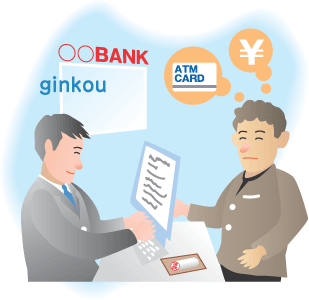
8-1 Opening an account
To open a bank account, fill the form provided at the counter and be prepared to show your a resident card and passport. Use a seal or sign the form. When you open an account, you will probably be issued with a cash card, which will enable you to use ATM (automatic teller machine) or CD (cash dispenser).
8-2 Withdrawal and deposit
You can withdraw using bankbook and registered seal on the counter, but it’s more convenient to use ATM or CD. You can withdraw easily inserting cash card and entering your pin number at the machine. It is more common to deposit using ATM with cash card or bankbook.
8-3 Overseas remittance
There are three ways of overseas remittance; a remittance check, ordinary money order and telegraphic money order. Though you can mail the overseas remittance check issued by the bank, remittance by ordinary or telegraphic money order is more reliable. Telegraphic money order is the fastest among them.